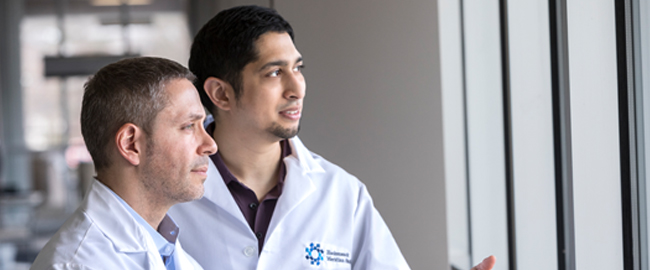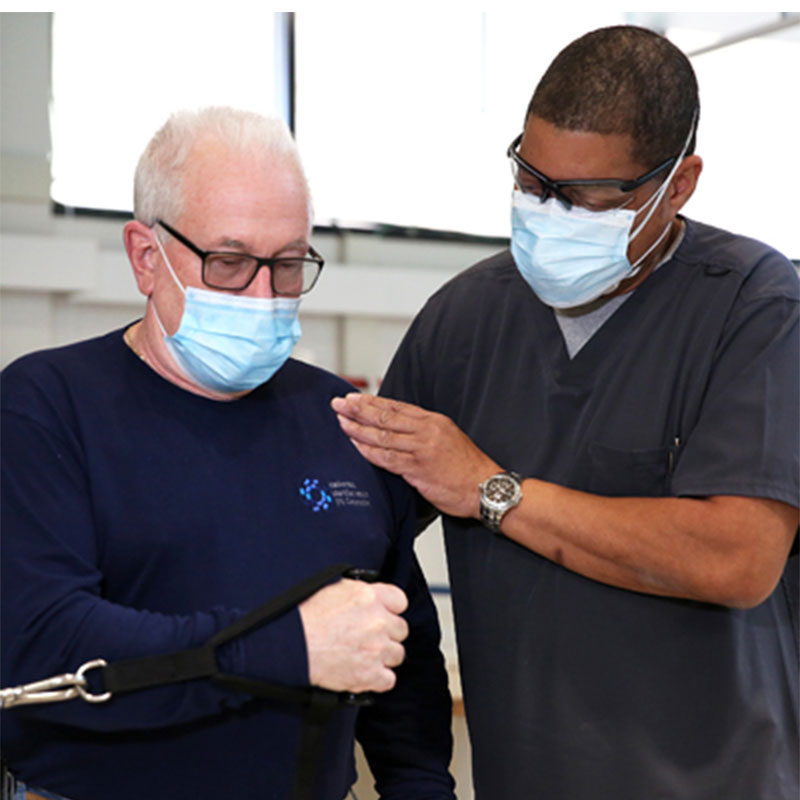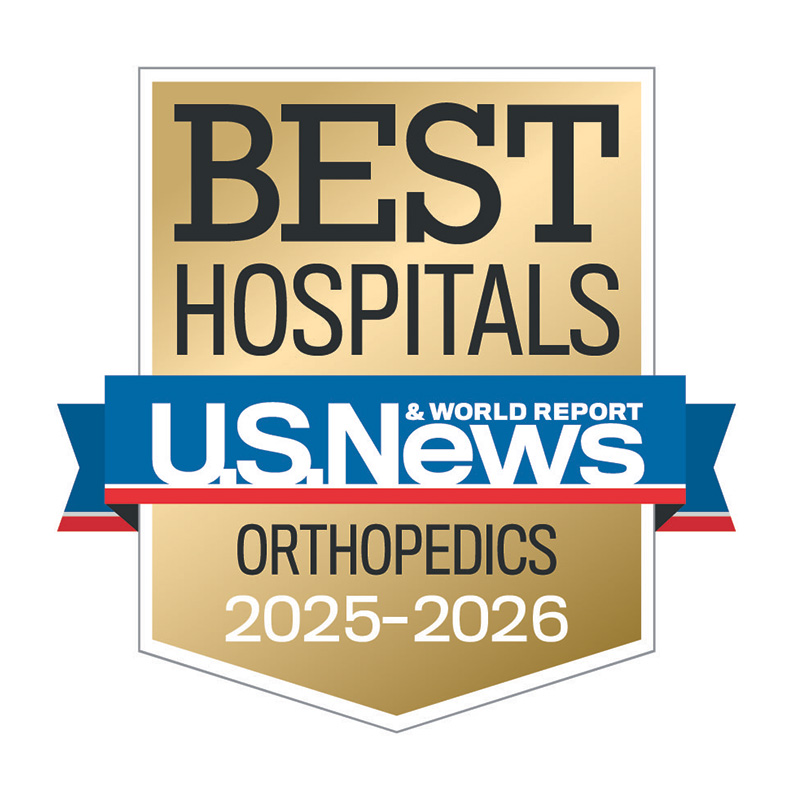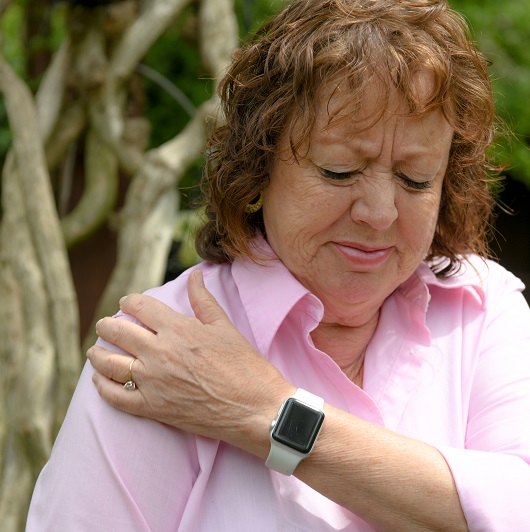Shoulder and Elbow Pain Treatment in New Jersey
Understanding the Shoulder Joint
The shoulder joint is a complex arrangement of bones, tendons, and muscles that connects the humerus (upper arm bone), scapula (shoulder blade), and clavicle (collarbone). Its stability and movement are primarily controlled by a group of muscles and their tendons.- Rotator cuff: wraps around the joint to keep the head of the humerus centered in its socket.
- Deltoid: the large muscle, which gives the shoulder its rounded shape, is the main muscle responsible for lifting the arm.
- Biceps: a muscle that also plays a role in shoulder stability.
To improve joint congruency, the labrum deepens the shallow socket of the scapula. All these structures allow the shoulder to rotate through a greater range of motion than any other joint in the body and provide stability and support.
What is Shoulder Replacement Surgery?
To understand the different types of shoulder replacement, it's important to know the two main parts of the joint. The shoulder is a "ball-and-socket" joint. The "ball" is the top of your upper arm bone (the humeral head) and the "socket" is a shallow, cup-like surface on your shoulder blade (the glenoid). Surgery is needed when the cartilage on the ball and/or the socket wears away, causing pain and stiffness.
Understanding the Elbow
The elbow is a hinge joint that connects the humerus (upper arm bone) with the two bones of the forearm, the radius and the ulna. Its stability and movement are primarily controlled by a group of muscles and their tendons. Its stability and movement are primarily controlled by a group of muscles and their tendons.- Biceps: The primary muscle on the front of the upper arm responsible for bending the elbow and rotating the forearm.
- Triceps: The large muscle on the back of the upper arm responsible for straightening the elbow.
- Forearm Muscles: A group of muscles that attach near the elbow and are responsible for wrist and hand movements.
Treatment Options for Shoulder and Elbow Pain
We regularly treat problems such as:
- Shoulder fractures
- Shoulder instability
- Frozen shoulder
- Labrum tears
- Tendonitis
- Rotator cuff
- SLAP lesions
- Tennis elbow
- Ulnar collateral ligament (UCL) pain
Since many orthopedic problems have more than one treatment option, our surgeons work closely with specialists in other fields to ensure that every patient receives exactly the right kind of treatment for their pain and condition. Our goal is the same as yours — to restore your function and range of motion so you can get back to doing the things you enjoy free of shoulder and elbow pain.
We offer the following non-surgical and surgical treatments for shoulder and elbow pain:
For some patients, a conservative, non-operative approach is the first and most effective strategy for managing shoulder and elbow pain. We offer the following non-invasive options:
- Hydrotherapy exercises are an effective way to treat shoulder and elbow injuries and alleviate pain.
- Integrative medicine options, such as massages and acupressure
- Joint injections, when used in combination with rehabilitation therapy, can significantly reduce pain and the need for surgery
- Bone marrow aspirate injections / stem cell treatments
- Joint injections
- Platelet-rich plasma injections
- Physical therapy & rehabilitation with advanced certified therapists
If conservative treatments don’t provide enough relief, minimally invasive procedures offer a targeted way to address the source of your shoulder or elbow pain. Advanced techniques, like arthroscopy, allow surgeons to precisely treat shoulder and elbow problems through very small incisions.
- Arthroscopic labral repair uses a small incision and tiny camera to examine and repair the tissues inside or around your shoulder joint, effectively addressing the pain caused by SLAP tears, Bankart tears, and rotator cuff injuries. This minimally invasive procedure is designed to reduce pain and restore function to your shoulder.
- Arthroscopic elbow surgery uses a small incision and tiny camera to examine and repair the elbow joint, providing faster recovery and less pain, scarring and blood loss.
- Arthroscopic rotator-cuff repair uses a small incision to access and repair damaged muscles and tendons on the shoulder bones.
- Elbow and shoulder biceps tendon repair
- Elbow replacement replaces the ends of the bones that meet at the elbow with an artificial joint made from metal and hard plastic.
- Reverse total shoulder replacement is a specialty of our surgeons for patients experiencing continued discomfort and pain after a previous joint replacement.
- Total shoulder replacement, or Shoulder Arthroplasty, replaces part of the upper-arm bone with a metal stem and ball, and replaces the ball and socket of the shoulder joint.
- Shoulder resurfacing for arthritis
- Tommy John procedure repairs elbow ligaments with tendon grafts from elsewhere in the body.
Find A Shoulder and Elbow Specialist or Learn More About Our Orthopedic Expertise
Search our network of orthopedic experts, browse our care locations across New Jersey, or learn more about why you should choose Hackensack Meridian Health to diagnose and treat your shoulder and elbow pain.
A Personalized Care Approach
Our board-certified specialists are nationally and internationally recognized as clinical and research leaders in orthopedics. With expertise in treating shoulder and elbow pain, our specialists perform more than 300 surgeries annually, achieving a low rate of complications or infections. This reflects the high-quality care we provide to patients seeking relief from pain and improved mobility.
To further support shoulder and elbow recovery, we offer a comprehensive rehabilitation program tailored to help reduce pain and restore function, including acute rehab, sub-acute rehab, home care, and outpatient therapy. With a team of surgeons who have extensive experience and are dedicated to helping patients manage pain and improve function.
Treatment for Sports-Related Shoulder and Elbow Injuries
The board-certified specialists within our Sports Medicine program are highly experienced in diagnosing and treating pain associated with a wide array of sports injuries, including those to the shoulder, elbow, ankle, knee and hip. We also provide a Sports Medicine and Pain Management Rehabilitation program.
24/7 Care for Traumatic Orthopedic Injuries
Our orthopedic trauma team has extensive experience treating pain from fractures and other musculoskeletal injuries such as ligament or tendon tears and joint dislocations. Every team member is dedicated to providing you with the most advanced service and treatment available to help alleviate your pain and heal your injury.









